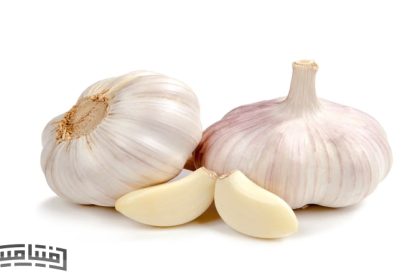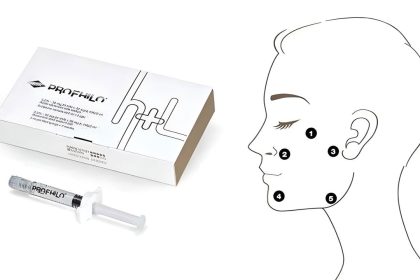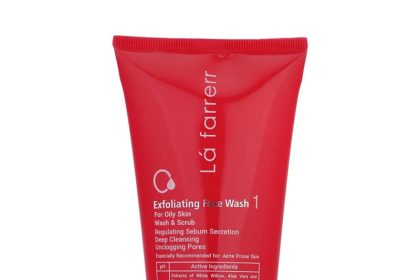If you are active in social networks, you have probably come across these types of questions and related content. The menstrual cup has been introduced as an alternative product to sanitary pads and tampons that is more economical and does not harm the environment. After that, many people need to use this product period Or they recommend menstruation. On the other hand, some people have not had a good experience and have a negative opinion. In this article, we want to see what are the advantages and disadvantages of the menstrual cup in comparison to related and required period products? And how to use it.
What is a menstrual cup?
Menstrual cup is made of silicone or rubber in the form of a cup, bell or funnel, you fold this cup and place it in the vagina. Due to its distinctive and flexible shape, it sticks to the vaginal wall just below the cervix and collects menstrual secretions, including blood and endometrial tissue.
Menstrual cups have been around since at least the 1860s, but they didn’t become widely marketed until American actress and singer Leona Chalmers began promoting them in the 1930s. Also, the way of using and causing discomfort in the early rubber models caused that tampon Be a more popular product. Thanks to the improved design and soft silicone structure, as well as environmental conservation campaigns, using this economical and environmentally friendly alternative product, Sanitary napkins And tampons are considered.

Depending on the intensity of discharge and bleeding, you can use it for 4-12 hours. After removing, emptying and washing, the menstrual cup can be used again.
It is necessary to boil used cups for at least five minutes after each period, so that they are sterilized and ready for use for the next month.
Because the cups do not contain cotton or absorbent materials, they are less prone to infections such as toxic shock syndrome (TSS), and if placed correctly in the vagina, you will not feel any discomfort and the cup will be able to collect menstrual blood without any leakage. Was.
Advantages of menstrual cups compared to tampons and sanitary napkins
Compared to other products used during menstrual bleeding, these cups have several advantages, the most important of which are:
1. Can be used for many times and for a long time
A menstrual cup can be used for up to 12 hours at a time, while tampons cannot be used for more than 5 hours, depending on how heavy your period is. Also, each cup is reusable for up to five years or more. This makes them cost less in the long run than tampons or sanitary napkins (although the initial cost is higher).
2- High capacity
Depending on the model, each cup can hold up to 29.5 ml of secretions and blood, which is almost twice as much as a tampon or pad.
3- Reducing the smell of period
The blood and tissue that is absorbed by the sanitary napkin produces an unpleasant and unpleasant smell that is annoying. Using a cup does not have this problem.
4- Safe use
Experts consider using a menstrual cup to be safer for your health than tampons because it reduces the risk of any of the problems associated with tampons or pads, such as infection, itching, or skin irritation.

5- Affordable and environmentally friendly
Since the cup does not need to be changed again, less waste is produced and helps to preserve the environment. You buy the cup once and it can be used for up to ten years. Therefore, it is less expensive than sanitary napkins that you need to use several packs every month.
Read more: What is a night sanitary pad? Introducing the best brands
Disadvantages and possible problems
In addition to the benefits, the menstrual cup also has disadvantages, the most important of which are mentioned here:
leakage of secretions
If the menstrual cup is not placed correctly or you cannot or forget to remove the filled cup and empty it, there will be a possibility of leakage. Additionally, people who have heavy menstrual flow or pass blood clots frequently may experience more leakage.
Pain and discomfort during use
Inserting or removing the cup can be difficult and painful. If you don’t fold the cup correctly, it will hurt to insert it into the vagina. Or you may press the base hard to pull the cup down and out. Also, long nails or large cup sizes cause pain and minor damage to the vagina when removing and inserting it.
Sensitization
Most menstrual cups are made from latex-free materials, making them a great option for people with latex allergies. But for people who are allergic to silicone or rubber materials, there is a possibility of an allergic reaction. It may also increase the risk of bacterial infection.
Read more: 7 causes of vaginal itching and the best home remedies and health products
How to use a menstrual cup
When using a menstrual cup for the first time, you may feel a little discomfort, so it is better to moisten the cup with water or use a vaginal lubricant to facilitate the insertion of the cup.
To insert the cup correctly, do the following steps:
- Wash and disinfect your hands well.
- Moisten the edges of the cup with water or vaginal lubricant.
- While holding the opening up, press the cap firmly and fold it as shown in the picture.
- Place the menstrual cup in the vagina just as you would use tampon pads. The cup should be a few centimeters below the cervix.
- Once the cup is inserted into the vagina, twist it slightly and then release it to open and prevent menstrual secretions from leaking.
There are many techniques for compressing and folding the cup when inserting it into the vagina, the best of which is the compression and folding in the shape of the English letter (C).
Two other popular techniques are:
Fold the punch down: Place one finger on the top edge of the cup and press it to the center of the cup (near the base) and form a triangle.
Folding in English 7 shape: Press the two sides of the cup together so that it looks like an oval. Fold one side diagonally down to look like the number 7.

If you have placed the cup correctly and in the right place, you should not feel it. You should be able to easily move, jump, sit, stand, and perform other daily activities without the cup moving or falling off. If you have problems putting the cup on, talk to your gynecologist.
How to remove and empty the cup
Depending on whether your bleeding is heavy or not, you can use a menstrual cup for 6 to 12 hours. The time to fill and empty the cup is 12 hours. If it fills up before then, you need to empty it ahead of time to prevent leakage.
To remove and empty the cup, just follow these steps correctly:
- Wash and disinfect your hands thoroughly.
- Insert your index finger and thumb into the vagina. Pull the stem of the cup slowly until you can reach the base.
- Press the base and pull down to remove the cap.
- After taking out, empty the cup in the sink or toilet.
Menstrual cups should be washed and cleaned before being placed back into the vagina. The cup should be emptied at least twice a day and boiled after the end of the period. Discard disposable cups after removal.

Menstrual cup contraindications
You should not use a menstrual cup in certain cases:
Vaginismus: Putting a cup inside the vagina in this situation is very uncomfortable and painful.
Uterine fibroids: which can cause heavy menstruation and pelvic pain.
Endometriosis: It causes severe pain during menstruation.
Variations in uterine position: which may affect the position of the cup.
Other menstrual products
Periods should not interfere with your daily life. In addition to the menstrual cup, there is a wide range of products to keep you comfortable.
Period underwear
These clothes look like your regular underwear, but they have high absorbency. They can be used in place of pads or tampons when you’re bleeding lightly, or as backup when you’re bleeding heavily.
Soft tampons
Soft tampons are an alternative to traditional tampons without threads.
Period apps
Thanks to the advancement of technology, it is no longer necessary to mark the start and end date of your period on a paper calendar. Applications are designed for the period period, by installing them you can record and track the start and end day of the period cycle, ovulation time and period symptoms.
Some of the best menstrual cycle management apps are:
- Period Tracker app: It can be used for Android and iPhone operating systems.
- Flo app: You can record and track the amount of physical activity, water consumption, sleeping time and different symptoms on the cycle days in this program.
- Clue app: It has an extensive encyclopedia of health articles and lets you track everything from the condition of your hair to how much sleep you get during your cycle.
- FitrWoman application: In addition to recording your cycle and symptoms, it gives you tips to maximize your workouts and diet recipes for each stage. It also syncs with Apple Health.
last word;
Menstrual cups are a great option for menstrual hygiene, as they are more economical in addition to reducing waste generation and helping to protect the environment.
Always read the instructions on the package. It may take several tries to figure out how to use the cup, so be patient.
FAQ:
1- What are the important points of choosing the right menstrual cup?
When choosing the right cup, pay attention to these points:
Your age, the length of your cervix, the intensity of your monthly bleeding, the firmness and flexibility of the cup, the capacity of the cup, the strength of your pelvic floor muscles.
If you had a natural birth.
2- Does using a menstrual cup cause a urinary infection?
Using a cup does not cause infection in the urinary system, because these cups are made of medical and hygienic silicone, which acts neutrally in the body. It is very important to thoroughly wash and disinfect hands and cups after each use.
3- Can I go to the pool and swim with a menstrual cup?
In addition to doing daily activities, you can easily swim with a menstrual cup and not worry about secretions.
4- Does using a menstrual cup cause the vagina to dilate and sag?
Regardless of the elastic nature of the vagina, the menstrual cup is made of soft and highly flexible medical grade silicone and is designed in two sizes to perfectly fit a woman’s body anatomy. Therefore, it does not have a negative effect on the elastic anatomy of the vagina.
RCO NEWS
RCO


















